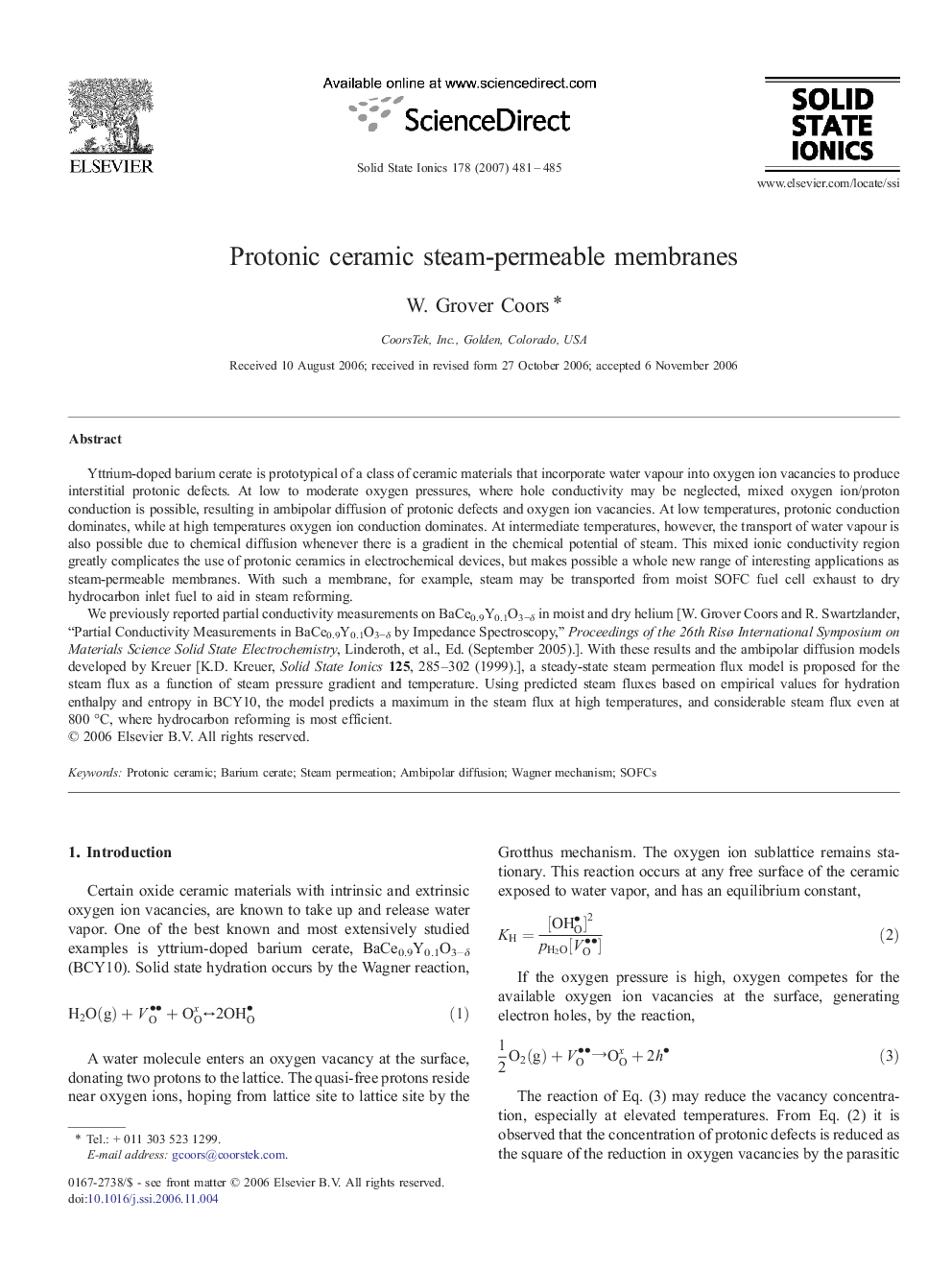| Article ID | Journal | Published Year | Pages | File Type |
|---|---|---|---|---|
| 1298867 | Solid State Ionics | 2007 | 5 Pages |
Yttrium-doped barium cerate is prototypical of a class of ceramic materials that incorporate water vapour into oxygen ion vacancies to produce interstitial protonic defects. At low to moderate oxygen pressures, where hole conductivity may be neglected, mixed oxygen ion/proton conduction is possible, resulting in ambipolar diffusion of protonic defects and oxygen ion vacancies. At low temperatures, protonic conduction dominates, while at high temperatures oxygen ion conduction dominates. At intermediate temperatures, however, the transport of water vapour is also possible due to chemical diffusion whenever there is a gradient in the chemical potential of steam. This mixed ionic conductivity region greatly complicates the use of protonic ceramics in electrochemical devices, but makes possible a whole new range of interesting applications as steam-permeable membranes. With such a membrane, for example, steam may be transported from moist SOFC fuel cell exhaust to dry hydrocarbon inlet fuel to aid in steam reforming.We previously reported partial conductivity measurements on BaCe0.9Y0.1O3−δ in moist and dry helium [W. Grover Coors and R. Swartzlander, “Partial Conductivity Measurements in BaCe0.9Y0.1O3−δ by Impedance Spectroscopy,” Proceedings of the 26th Risø International Symposium on Materials Science Solid State Electrochemistry, Linderoth, et al., Ed. (September 2005).]. With these results and the ambipolar diffusion models developed by Kreuer [K.D. Kreuer, Solid State Ionics125, 285–302 (1999).], a steady-state steam permeation flux model is proposed for the steam flux as a function of steam pressure gradient and temperature. Using predicted steam fluxes based on empirical values for hydration enthalpy and entropy in BCY10, the model predicts a maximum in the steam flux at high temperatures, and considerable steam flux even at 800 °C, where hydrocarbon reforming is most efficient.
